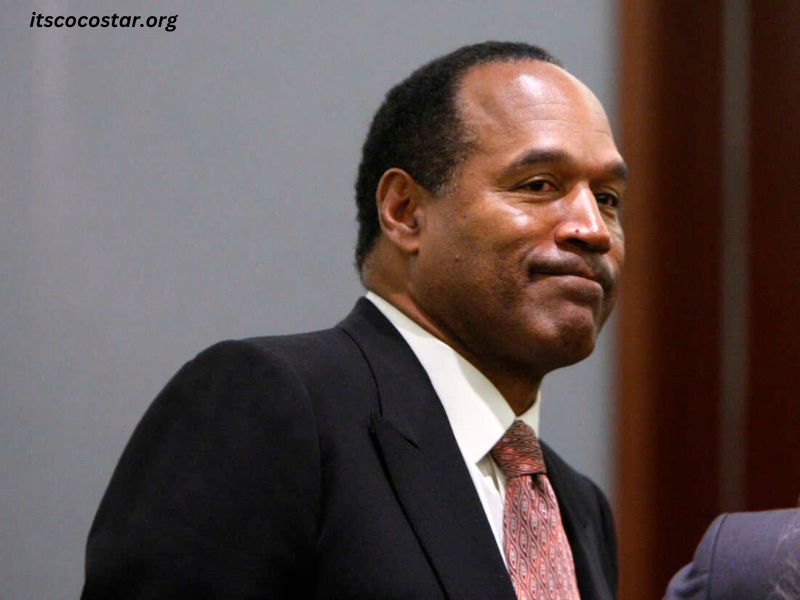The story of O.J. Simpson is one that continues to captivate the public’s imagination decades after his rise to fame, his controversial trial, and the aftermath that followed. His life has been a whirlwind of sports stardom, media frenzy, and criminal allegations. But the question “Why not more blood on OJ?” refers to the unique perspective and theories that have emerged about his involvement in the 1994 murders of his ex-wife, Nicole Brown Simpson, and her friend, Ron Goldman. While O.J. Simpson was famously acquitted in a criminal trial, the question persists: if Simpson was the killer, why wasn’t there more physical evidence, such as blood, linking him to the crime scene?
This article takes an in-depth look at the various aspects of O.J. Simpson’s legacy, exploring the events leading up to and after the murders, examining the prosecution and defense strategies during the trial, and delving into the public and media’s obsession with Simpson. We also analyze the key question that has lingered for years: Why didn’t investigators find more blood at the crime scene or on Simpson’s body, given the brutality of the killings?
The Rise of O.J. Simpson: An Icon in Two Worlds
Before the murders, O.J. Simpson was a household name in the United States, known for his excellence in both football and acting. Born on July 9, 1947, in San Francisco, Simpson became one of the most famous football players of his generation. He was a Heisman Trophy winner, a Hall of Famer, and a running back for the Buffalo Bills and the San Francisco 49ers. After retiring from football, Simpson transitioned into acting and was well-known for his appearances in commercials and movies, most notably the “Naked Gun” series.
His celebrity status gave him an image of a charming and charismatic individual, making it all the more shocking when he was arrested for the murders of Nicole Brown Simpson and Ron Goldman on June 12, 1994. At the time of the killings, Simpson had been divorced from Nicole for two years, and their relationship had been tumultuous, with allegations of domestic violence and infidelity. The question of his guilt or innocence would become the central focus of one of the most widely publicized trials in history.
The Murders: A Brutal Crime
On the night of June 12, 1994, Nicole Brown Simpson and her friend Ron Goldman were found brutally murdered outside her home in Brentwood, Los Angeles. Both victims were stabbed multiple times, with Nicole suffering severe wounds to her neck and Ron being almost decapitated. Investigators quickly discovered that the murders were violent, and they were unsure who was behind them, though suspicions quickly turned to O.J. Simpson due to his history with Nicole.
What made the case even more complex was the lack of immediate forensic evidence pointing directly to Simpson. While blood was found at the crime scene and in Simpson’s car, it wasn’t as overwhelming as one might expect in a case involving such brutal stabbings. The lack of “more blood on O.J.” became a focal point for the defense in the ensuing trial.
The Trial of the Century: Defense vs. Prosecution
In 1995, Simpson’s criminal trial began, and it became known as the “Trial of the Century.” The prosecution’s case was that Simpson had murdered Nicole and Ron out of a fit of jealous rage. They presented evidence such as the bloody glove found at Simpson’s estate and the blood found in his car, but the case was complicated by the lack of more conclusive forensic evidence linking Simpson directly to the murders.
The defense, led by attorney Johnnie Cochran, seized on this issue, pointing to inconsistencies in the evidence. They argued that the blood found on Simpson’s car, home, and clothing could have been planted by the police. The defense team also questioned the integrity of the Los Angeles Police Department (LAPD), bringing up allegations of racial bias and misconduct, particularly with Detective Mark Fuhrman, who had a history of using racial slurs.
The defense’s strategy was clear: they needed to create doubt in the minds of the jurors. While the prosecution had a compelling narrative, they lacked the physical evidence to conclusively tie Simpson to the murders. This is where the question of “why not more blood on O.J.” became crucial.
The Blood Evidence: Missing Pieces?
One of the most discussed aspects of the trial was the blood evidence, or the perceived lack thereof. While there was blood found at Simpson’s home, his car, and the crime scene, the amount of blood was not as overwhelming as one might expect given the ferocity of the murders.
The crime scene itself had a substantial amount of blood, and it was quickly determined that Nicole Brown Simpson and Ron Goldman had been killed by a knife or some similar instrument. However, there were no traces of Simpson’s blood found at the scene, which was unusual. If Simpson had been the murderer, why did investigators not find more of his blood at the crime scene, on the victims, or at the location where the attack occurred?
The lack of more blood on O.J. Simpson was a point of contention throughout the trial. Forensic experts testified that, given the brutality of the killings, Simpson should have had more blood on him or at least traces of his blood at the scene. However, no substantial evidence was presented to conclusively link Simpson to the crime scene beyond the bloody glove and the blood found in his car.
In the defense’s view, this lack of overwhelming evidence was key to their argument that Simpson had been framed. They suggested that the LAPD had planted evidence to ensure his conviction, using the lack of blood evidence to fuel the narrative of police misconduct. Cochran’s famous line, “If it doesn’t fit, you must acquit,” referring to the infamous glove that appeared too small to fit Simpson’s hand, became a rallying cry for Simpson’s supporters.
The Aftermath: The Civil Case and Legacy
Despite being acquitted of criminal charges, Simpson’s troubles were far from over. In 1997, a civil trial found Simpson liable for the wrongful deaths of Nicole Brown Simpson and Ron Goldman. He was ordered to pay $33.5 million in damages to the victims’ families. The civil trial had a lower burden of proof, and the jury found that the evidence was sufficient to hold Simpson responsible for the deaths, despite the lack of direct blood evidence tying him to the crime scene.
The public perception of Simpson was forever altered by the trial. For some, he remained a symbol of racial injustice and police corruption, while for others, he was a murderer who had used his fame and wealth to escape justice. His involvement in the 2007 armed robbery incident in Las Vegas, where he attempted to steal sports memorabilia, only added to the tarnished image, leading to his conviction on robbery and kidnapping charges in 2008. He served nine years in prison before being released in 2017.
The Question of “Why Not More Blood on O.J.?”
The question of why there wasn’t more blood evidence linking Simpson to the crime remains a topic of debate among legal experts, conspiracy theorists, and the public. There are several possible explanations:
- The Nature of the Crime: It’s possible that the murders were not as messy as they appeared. Some forensic experts have argued that Simpson might have had a clean getaway because he didn’t engage in a prolonged struggle with the victims or that he had changed clothes after the murders.
- The Clean-Up: Another possibility is that Simpson attempted to clean himself up after the murders. He may have washed the blood off his hands, clothes, and body before returning to his car, which would explain the absence of substantial blood evidence.
- Planting of Evidence: The defense’s argument that the LAPD planted blood evidence was a central aspect of their case. They suggested that the police were so eager to convict Simpson that they fabricated evidence to frame him, including the bloody glove found at his home.
- Flawed Investigation: The LAPD’s investigation was widely criticized, and there were numerous mistakes made during the collection of evidence. Some experts argue that the lack of more blood evidence could be attributed to these errors in forensic procedures and mishandling of evidence.
Conclusion
The question of “Why not more blood on OJ?” is not just about the physical evidence in the case; it’s also about the way the trial played out, the flaws in the investigation, and the wider implications of the case on the American legal system. Simpson’s acquittal remains a controversial topic, with some believing that he was innocent, while others maintain that he got away with murder due to a combination of legal strategy, celebrity status, and institutional flaws.
Ultimately, the lack of conclusive blood evidence linking Simpson to the murders of Nicole Brown Simpson and Ron Goldman may never be fully explained. It remains one of the many complexities of the case, symbolizing the ambiguity and uncertainty that continues to surround one of the most famous and divisive trials in modern American history. Whether O.J. Simpson was the murderer or a victim of a flawed justice system, the legacy of his case will continue to provoke debate for years to come.






